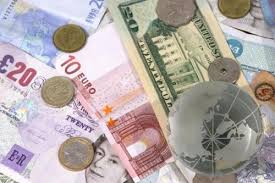The letdown announced on Thursday stemmed from Google’s expanding payroll and a run-up in the US dollar that has been driven by fears that the euro will crumble if governments in Greece, Spain, Portugal and Italy default on their perilously high debts
San Francisco: Google Inc.’s second-quarter earnings missed analysts’ target as higher expenses and the fallout from the European debt crisis dragged down the Internet search leader.
The letdown announced on Thursday stemmed from Google’s expanding payroll and a run-up in the US dollar that has been driven by fears that the euro will crumble if governments in Greece, Spain, Portugal and Italy default on their perilously high debts.
The worries hurt Google because about one-third of the company’s revenue comes from Europe, and customer payments made with the euro translated into fewer dollars than a year ago. Even so, the currency squeeze wasn’t as severe as some analysts anticipated.
Meanwhile, Google is spending more to maintain its commanding lead in Internet search while it also tries to diversify by developing products in other promising niches such as online video and mobile devices. To help achieve its goals, the company added nearly 1,200 employees in the second quarter to end June with more than 21,800 workers.
Despite the rising expenses, Google’s net income rose at a fast clip as second-quarter revenue came in slightly above analysts’ forecasts. But the earnings growth wasn’t quite as robust as analysts had hoped, a factor that seemed to amplify investor concerns already weighing on Google’s stock price.
Google shares fell $20.49, or more than 4%, in extended trading Thursday after the release of results. Earlier, the company finished the regular session at $494.02, up $2.68.
Although Google remains the Internet’s most profitable company, investors have been fretting about signs of decelerating growth amid stiffer competition from Apple Inc., Facebook and Microsoft Corp. On top of those challenges, a showdown over online censorship in China that has muddied Google’s future prospects in the world’s most populous country.
Thursday’s report offered some encouraging news, though.
In a positive sign for the overall economy, marketers were willing to pay more for the online ads that generate virtually all of Google’s income, and people are clicking on the commercial messages more frequently. Those trends provide another indication that more companies and shoppers are feeling a little better as they recover from the worst economic downturn in more than 70 years.
“We are really pleased with the way we are performing in this economy,” Patrick Pichette, Google’s chief financial officer, said during a Thursday conference call with analysts. “That’s why we feel confident about the future.”
Google, which is based in Mountain View, earned $1.84 billion, or $5.71 per share, in the April-June period, up 24% from $1.48 billion, or $4.66 per share, a year ago.
If not for expenses covering employee stock compensation, Google said it would have made $6.45 per share. That figure was below the average estimate of $6.52 per share among analysts polled by Thomson Reuters.
Revenue climbed 24% to $6.82 billion, from $5.52 billion a year earlier. After subtracting commissions paid to its ad partners, Google’s revenue stood at $5.09 billion about $10 million above analyst projections.
In other key figure watched closely by investors, the number of revenue-generating clicks on Google’s ads in the second quarter increased 15% from the same time last year. The gain is in the same range as the increases in the past year.
The average price per ad click in the second quarter edged up 4% from last year, but it’s slower than the growth seen during the previous two quarters.
After clamping down on its costs most of last year, Google has been spending more freely because management believes the U.S. economy is steadily rebounding, with electronic commerce and the rest of the technology sector leading the charge.
Google has brought in nearly 2,000 employees during the first half of this year, through both recruitment and a flurry of mostly small acquisitions. The company’s spending on data centers and other projects known as capital expenditures totaled $476 million, more than tripling from the same time last year.
Pichette said the company plans to continue investing in more employees and technology as it tries to position itself to take advantage of an improving economy.
To help pay for its ambitions, Google said Thursday that it will take on significant debt for the first time in its six years as a public company, even though it has $30 billion in cash. The company’s board of directors approved a plan to borrow up to $3 billion.

